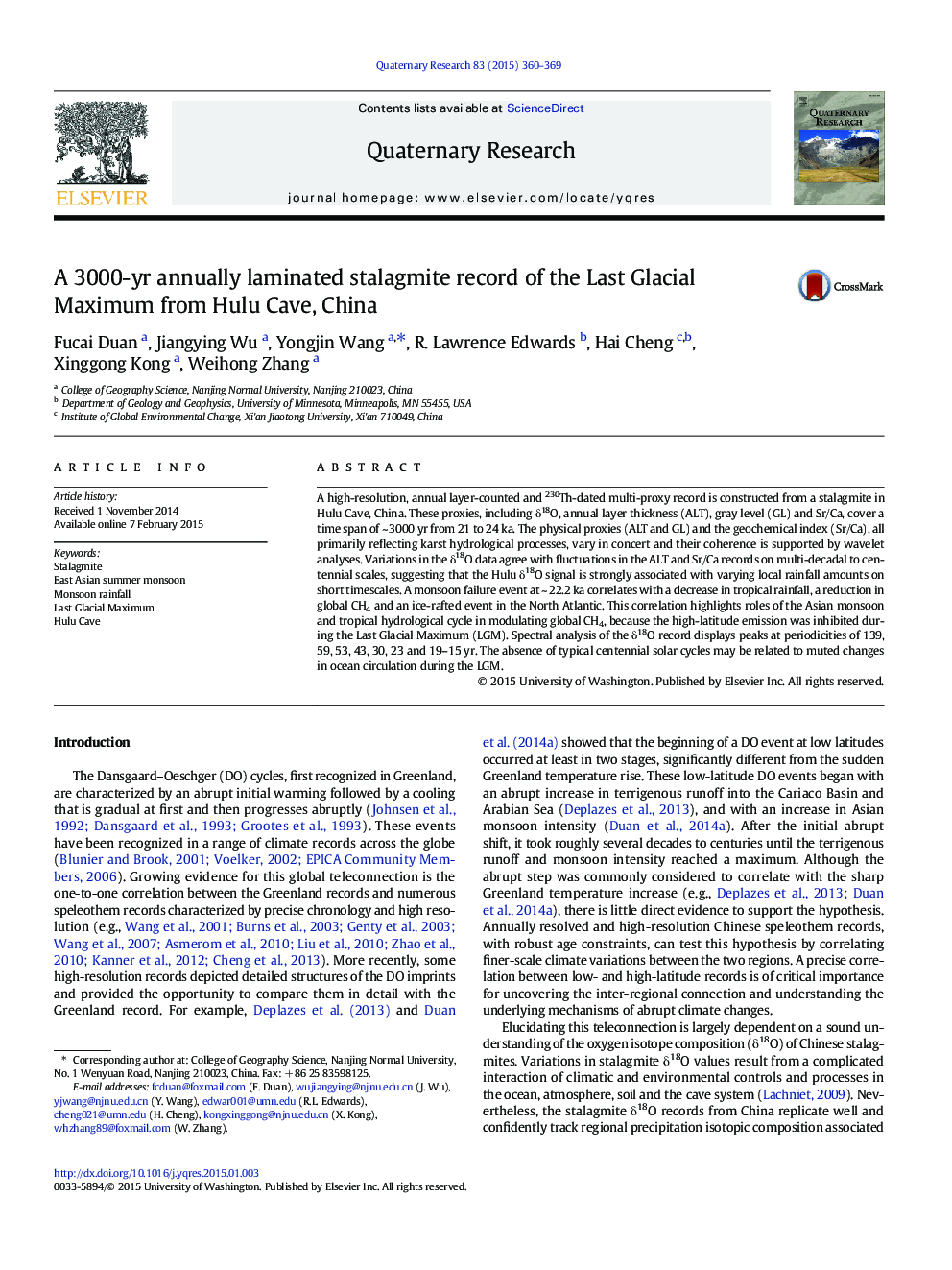| Article ID | Journal | Published Year | Pages | File Type |
|---|---|---|---|---|
| 1045151 | Quaternary Research | 2015 | 10 Pages |
A high-resolution, annual layer-counted and 230Th-dated multi-proxy record is constructed from a stalagmite in Hulu Cave, China. These proxies, including δ18O, annual layer thickness (ALT), gray level (GL) and Sr/Ca, cover a time span of ~ 3000 yr from 21 to 24 ka. The physical proxies (ALT and GL) and the geochemical index (Sr/Ca), all primarily reflecting karst hydrological processes, vary in concert and their coherence is supported by wavelet analyses. Variations in the δ18O data agree with fluctuations in the ALT and Sr/Ca records on multi-decadal to centennial scales, suggesting that the Hulu δ18O signal is strongly associated with varying local rainfall amounts on short timescales. A monsoon failure event at ~ 22.2 ka correlates with a decrease in tropical rainfall, a reduction in global CH4 and an ice-rafted event in the North Atlantic. This correlation highlights roles of the Asian monsoon and tropical hydrological cycle in modulating global CH4, because the high-latitude emission was inhibited during the Last Glacial Maximum (LGM). Spectral analysis of the δ18O record displays peaks at periodicities of 139, 59, 53, 43, 30, 23 and 19–15 yr. The absence of typical centennial solar cycles may be related to muted changes in ocean circulation during the LGM.
